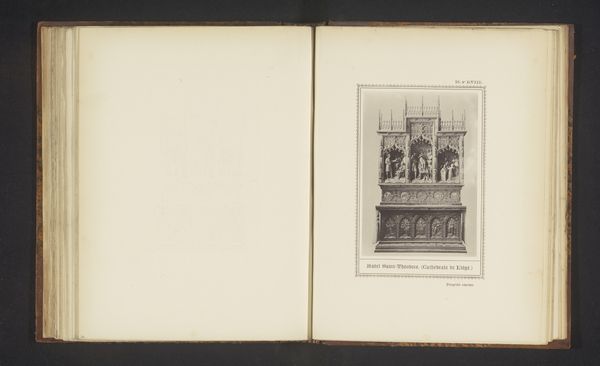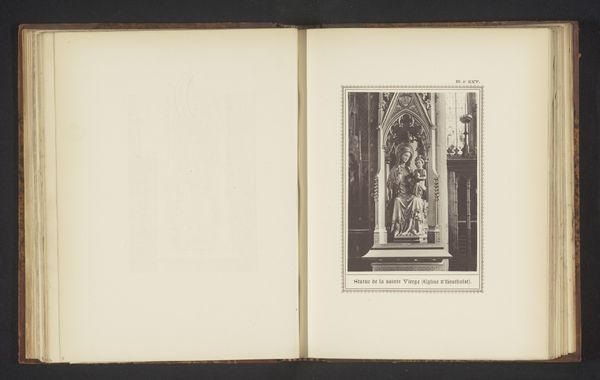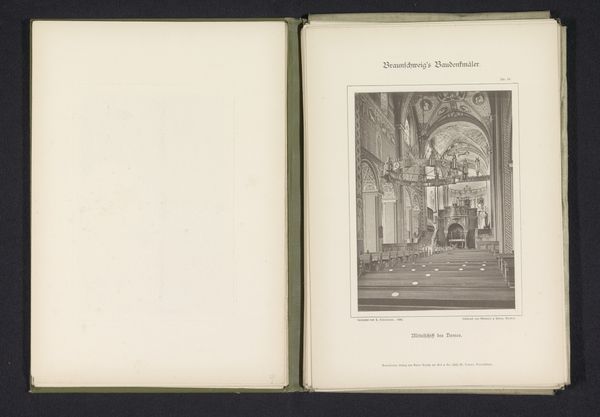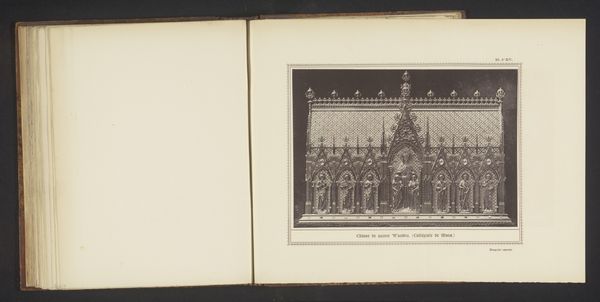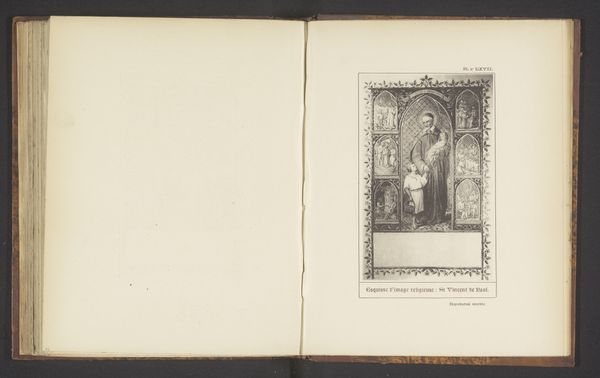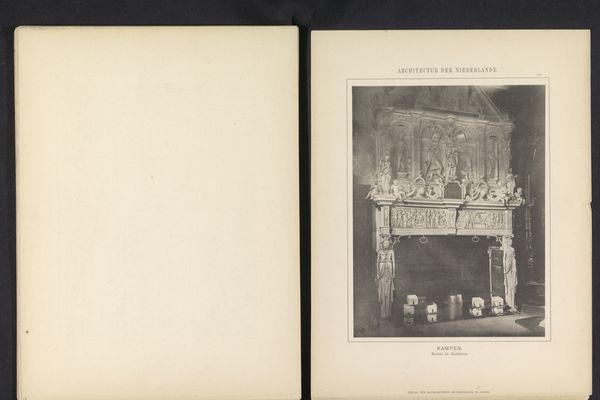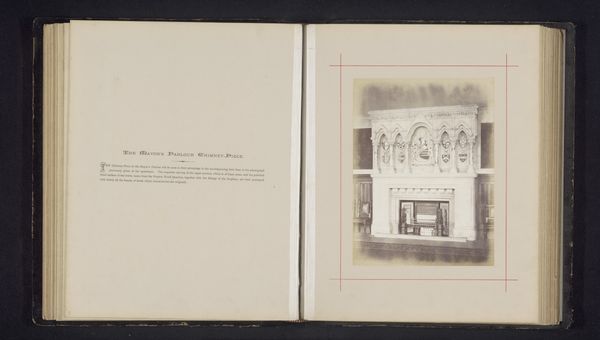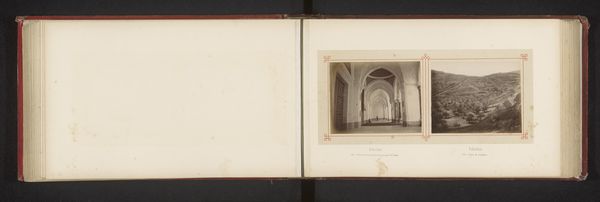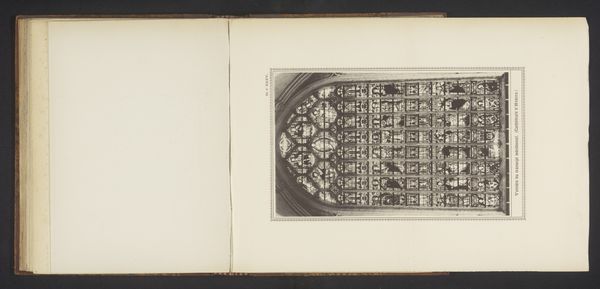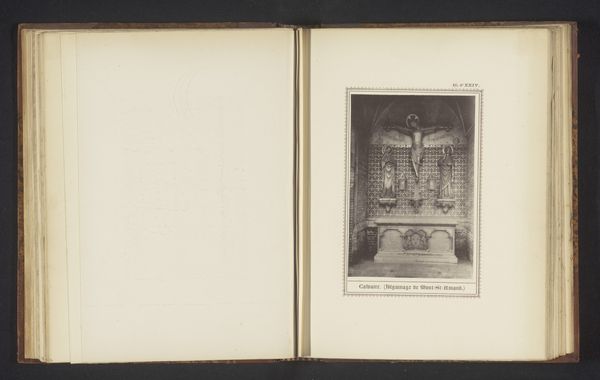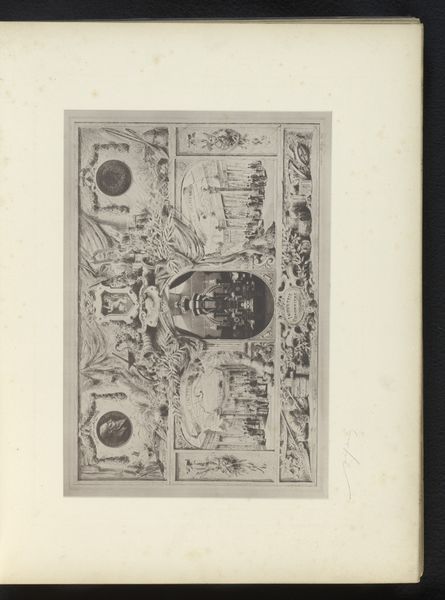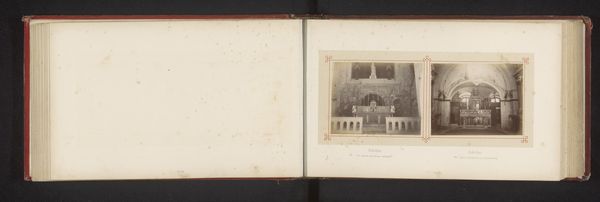
print, engraving
#
medieval
#
ink paper printed
# print
#
engraving
Dimensions: height 159 mm, width 110 mm
Copyright: Rijks Museum: Open Domain
Curator: Looking at this print entitled, "Altaarstuk voor het weeshuis van Kwadrecht, België," we see a detailed engraving, likely from before 1896. It depicts an altarpiece, as the title suggests, situated within, as we learn, the Kwadrecht orphanage in Belgium. Editor: My first impression is its meticulous detail—the rendering of the gothic arches and the figures within is impressive, especially for an engraving. It's almost dreamlike, or staged for memory. But knowing it’s inside an orphanage—it complicates things. Curator: Precisely. The choice to display such a religiously-themed, albeit, magnificent, altarpiece within an orphanage tells us a great deal about the socio-political context of the late 19th century. The orphanage would have been heavily influenced by religious doctrine, where the visual reinforcement was essential. Editor: So this is not just decoration; it is an integral part of the orphanage's ideological structure, meant to guide or even control the children. Who commissioned it and why becomes paramount to the artwork's cultural meaning, not just the artwork's appearance. Curator: I agree. Looking at this today, it's a fascinating insight into the intertwined roles of charity, religion, and institutional care. Prints such as this one, circulated for documentation, offer valuable historical data about institutional identities and patronage in a specific region during this period. It invites one to question how power structures often hide in plain sight. Editor: And how those structures—the religious and societal beliefs of the time—shaped the lives and identities of children within these institutions. This piece becomes a window into their daily existence, and it challenges us to acknowledge their stories as central to our understanding of cultural heritage. We see this in countless institutions still today, art often speaks when power silences. Curator: Yes, reflecting on what this altarpiece might have meant for the children housed in the orphanage gives new resonance to understanding artwork. Editor: It does. It’s not just a pretty picture of the past; it's a reminder of who had the power to decide what stories are told and who has control of the space.
Comments
No comments
Be the first to comment and join the conversation on the ultimate creative platform.
